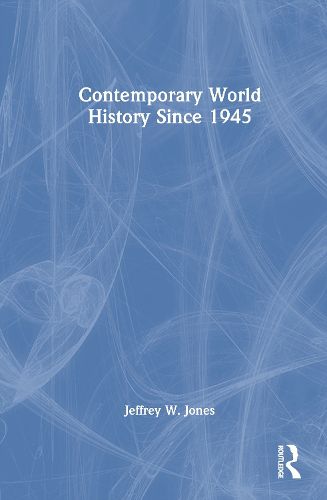Readings Newsletter
Become a Readings Member to make your shopping experience even easier.
Sign in or sign up for free!
You’re not far away from qualifying for FREE standard shipping within Australia
You’ve qualified for FREE standard shipping within Australia
The cart is loading…






This book introduces readers to the historical roots of the key events, issues, and themes in the post-World War II period since 1945.
Organized by region-Europe, Asia, the Middle East, Africa, and Latin America-it uses case studies to emphasize common themes and patterns. The book argues that the colonial period largely shaped the primary global relationships that still hold in the world today. During and after de-colonization, the Cold War emerged as the dominant global paradigm, but following the collapse of communism, a neo-liberal capitalist agenda prevailed in much of the world, although that has in turn shifted due to the global financial crisis of the late 2000s/early 2010s. The book explores these themes as well as terrorism and the environmental degradation of the planet which are major features of the post-Cold War world, along with racial/ethnic/religious diversity and conflict, democracy, human rights, nationalism, and gender relations.
This volume is an essential resource for students of Contemporary World History, the World Since 1945, and the World in the Twentieth Century more broadly.
$9.00 standard shipping within Australia
FREE standard shipping within Australia for orders over $100.00
Express & International shipping calculated at checkout
This book introduces readers to the historical roots of the key events, issues, and themes in the post-World War II period since 1945.
Organized by region-Europe, Asia, the Middle East, Africa, and Latin America-it uses case studies to emphasize common themes and patterns. The book argues that the colonial period largely shaped the primary global relationships that still hold in the world today. During and after de-colonization, the Cold War emerged as the dominant global paradigm, but following the collapse of communism, a neo-liberal capitalist agenda prevailed in much of the world, although that has in turn shifted due to the global financial crisis of the late 2000s/early 2010s. The book explores these themes as well as terrorism and the environmental degradation of the planet which are major features of the post-Cold War world, along with racial/ethnic/religious diversity and conflict, democracy, human rights, nationalism, and gender relations.
This volume is an essential resource for students of Contemporary World History, the World Since 1945, and the World in the Twentieth Century more broadly.